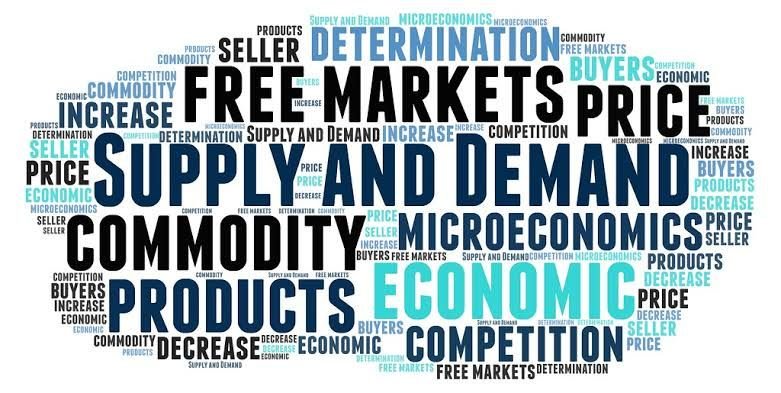Types of demand
Types of demand
(i) Demand for consumer goods and producer goods- Consumer goods are those final goods which directly satisfy the needs of the consumer. Such goods are: bread, milk, clothes, furniture etc. Capital or producer goods are those goods which help in the production of other goods and which indirectly satisfy the needs of consumers; such as machines, plants, agricultural and industrial raw materials etc. The demand for consumer goods is called direct or autonomous demand. The demand for producer goods is derived demand because these goods are not demanded for final consumption but for the production of other goods.

J. Dean has stated the following points in the context of the demand for producer goods in the economy-
1. The buyers of producer goods are businessmen and they are usually efficient. Hence, activities to increase sales have very little effect on them.
2. The objective of the buyers of consumer goods is purely economic. They buy capital goods only for the purpose of profit.
3. Since their demand is derived from consumption demand, there are continuous and sharp fluctuations in it.
(ii) Demand for Perishable and Durable Goods- Consumer and producer goods are further classified into perishable and durable goods. In economics, perishable goods are those which can be consumed only once, while durable goods are those which can be used more than once after a period of time. That is, perishable goods are consumed per se while durable goods are consumed only as services. Thus, perishable goods include all types of services, food items, raw materials, etc., while durable goods include houses, machines, furniture, etc. This distinction is all the more important because durable goods pose more complex problems than non-durable goods in demand analysis. Non-durable goods are usually sold to meet current demand which depends on current conditions. On the other hand, sale of durable goods adds to the stock of current goods whose services are consumed after a period of time. The demand for perishable goods is more elastic while the demand for perishable durable goods is less elastic in the short run and tends to be more elastic in the long run. J. Dean has stated that the demand for durable goods is more volatile with respect to business conditions. Postponement, substitution, storage and expansion are interrelated problems involved in determining the demand for durable goods.
(iii) Derived and Autonomous Demand- When the demand for a commodity is linked with the purchase of some basic commodities, its demand is called derived demand.
On the other hand, the demand for those commodities whose demand is not linked with the demand for some other commodities is called autonomous demand, such as food, clothing, housing etc. The demand for consumer goods is autonomous demand.
(iv) Firm (or Company) Demand and Industry Demand- Firm demand refers to the demand for a particular commodity by a particular firm. On the other hand, industry demand is the total demand for a commodity by a particular industry.
(v) Short Run Demand and Long Run Demand- For perishable goods like vegetables, fruits, milk etc., a change in price causes a quick change in the quantity demanded. Such goods have a single normal demand curve with negative slope. But for durable goods like equipment, machines, clothes and other such goods, a change in price will not have final effect on the quantity demanded until the existing stock of the commodity is adjusted which may take a long period. A short-run demand curve shows the change in quantity demanded due to a change in price, when the current stock of the durable good and the supplies of substitutes are given. On the other hand, a long-run demand curve shows the change in quantity demanded due to a change in price, when all adjustments have been made in the long run. According to Joel Dean, “Short-run demand means the current demand which has an immediate response to changes in price, fluctuations in income etc. while long-run demand ultimately results from changes in pricing, promotion or improvement in the product. Under this, the market gets enough time to adjust itself according to the new opportunity.”
(vi) Joint Demand and Composite Demand- When two goods are demanded together to satisfy a single want at the same time, it is called joint or complementary demand. Joint demand refers to the relationship between two or more goods or services which are demanded together (jointly). The demand for cars and petrol, pens and ink, and tea and sugar is joint demand. Goods which have joint demand are called complementary. A rise in the price of one good causes the demand for the other to fall, and vice versa. For example, a rise in the price of cars will make the demand for cars fall as well as the demand for petrol and reduce the price of petrol, provided the supply of petrol remains unchanged. On the other hand, if the cost of production of cars causes the price of cars to fall, their demand will rise and hence the demand and price of petrol will rise, provided the available supply of petrol remains unchanged. On the other hand, the demand for a good which can be put to many alternative uses is called composite demand. It is not only a characteristic of goods like leather, steel, coal, paper etc. but also of factors of production like land, labour and capital. For example, coal is in demand for railways, factories, domestic use etc. In composite demand, there is competition between different uses of a commodity. Hence, each use of that commodity competes with its other uses. Hence, it is also called competitive demand. A change in demand by one user for a commodity will affect its supply to other users, which will lead to a change in its price.


